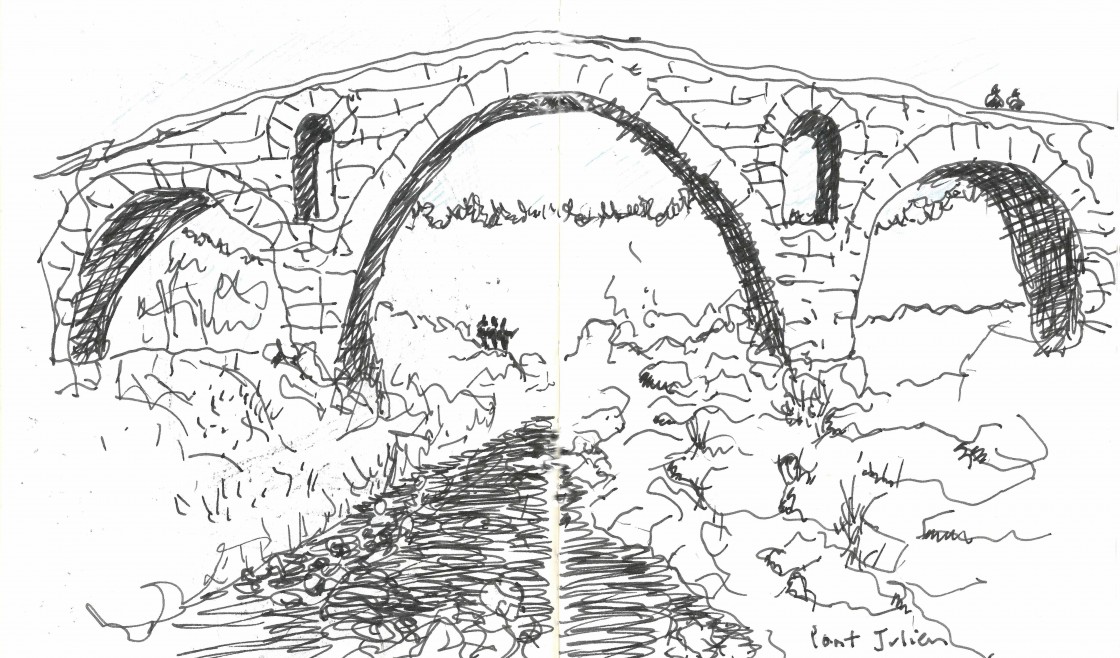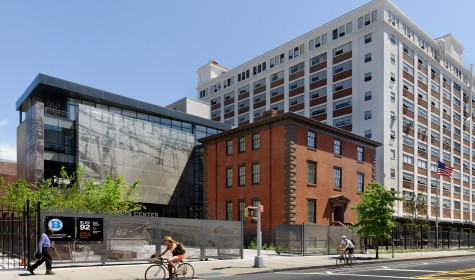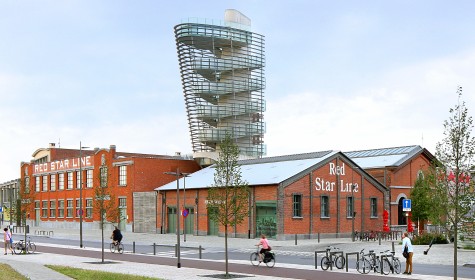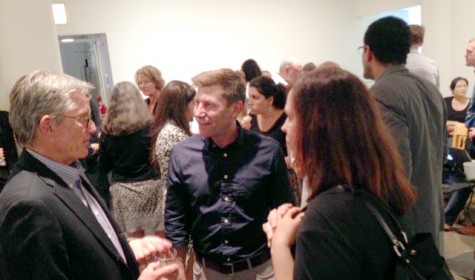Architectural Musings: Hand and Word

Architectural Musings: Hand and Word is a series of thoughts and sketches inspired by travel, design currents and other worldly observations. Installment #1 is an excerpt from BBB Managing Partner Fred Bland’s introductory remarks at the second annual Fitch Foundation symposium, “The Accidental Preservationist: Artists, Artisans, Outliers & the Future of Historic Preservation,” held on October 17, 2014 in New York City. Fred, who serves as the Chairman of the Fitch Foundation, shares his reflections on the evolution of the preservation movement.
“I spent most of the last two weeks in France, a few days in Paris and the rest in an ancient village in Provence. I penned these words immediately after yet another encounter – a séance, really (and not my first) with the Pont Julien, a small yet majestic Roman bridge built in the first century BC that until five years ago carried traffic. First, of course, Roman chariots, troops, even the emperor himself crossed this bridge… but, more recently, modern Citroens and Peugeots and huge lorries ladened with just-harvested grapes going to the local cooperatives. I spent two hours sketching this brilliant little masterpiece of engineering prowess and delicate architectural proportion. As I sketched, wonderfully alone, I was thinking about this conference and trying to understand why I felt a link between that bridge and this conference about “accidental preservationists.”
I began to understand that, although this Roman structure was well understood as the work of a brilliant earlier civilization, it was - more importantly – simply the most convenient route for crossing the Calavon River in the Luberon valley. In other words, it was for about 2100 years a part of life in those parts – through the end of the Roman era… the early Christian era… the Merovingian and the Carolingian eras… the Romanesque and Gothic periods… the Renaissance, Baroque, Romantic eras… and into our own Modern era – this structure has been a necessity that was continually maintained for its utility, not so much for its status as a monument from the past to be preserved. Rather than a self-conscience and heroic act of HISTORIC PRESERVATION, this bridge is still a vital presence into the twenty-first century because it is necessary to cross that river - and this was the most convenient place to do it. Why would you not continue to use it – and maintain it? It is simply a part of the fabric of everyday life, a part of an ongoing civilization. Was this “accidental preservation”? In a way, it was….
Fifty to sixty years ago in our country, with the preservation movement in its infancy, most acts of preservation were battles, often lost. The man whose name graces this foundation, James Marston Fitch, was at the forefront of many of these battles, typically providing intellectual heft for the soldiers in the field. From that perspective of fifty and sixty years ago, it could be argued that preservation has won the war. Historic preservation today has become a legitimate and accepted ingredient of enlightened urbanism. Of course, battles still rage - always will - and some deserving buildings will be lost. However, those of us who view the inclusion of old, along with the incorporation of new, as the right way to create great cities… well, we now operate on a level playing field and often as not, easily win those battles. No more Penn Stations, in other words. Also, no more wanton destruction of blocks of vernacular houses, whether they are brownstones in Brooklyn, painted-lady Victorians in San Francisco, or streamlined modernes in Miami Beach. I maintain that the act of preserving the best of our past is now ingrained in our culture in a way unthinkable to those warriors of the 1950’s and ‘60’s. It is now understood as natural and normal urbanism – not the activity of a few extremists – or, as Jim Fitch himself might have said, ‘the lunatic fringe.’


